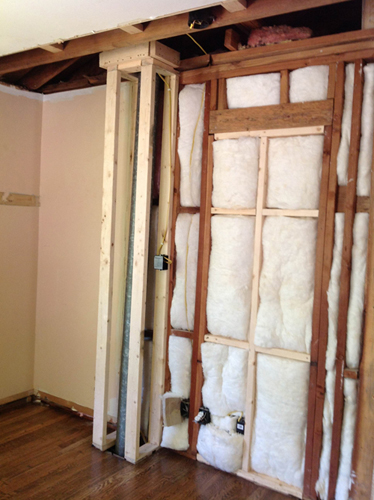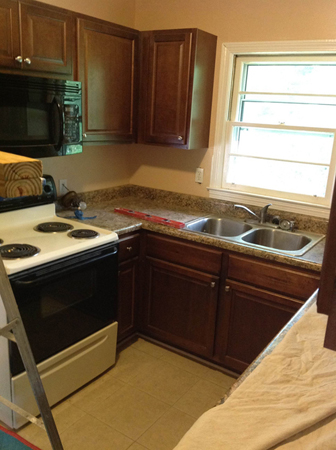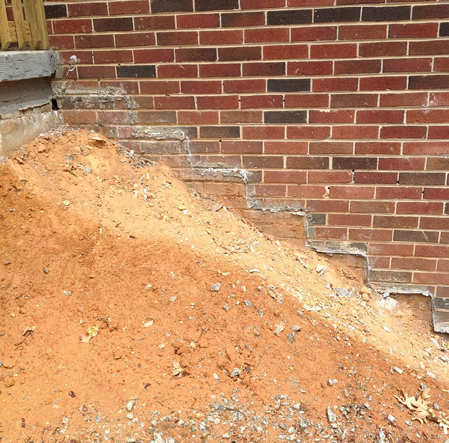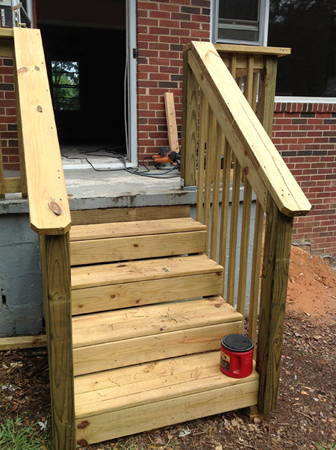I can’t believe I’m saying this: Dear Readers, I’d like to introduce you to Rental House #3.
“But Paula, didn’t you just buy a house? A couple months ago?”
Yep, it feels fast to me, too.
Check out the pics, and meet me below the photos to hear the details.
(If you’re reading by email, click “display images” to see the photos.)
The LowDown
The basic stats are normal: 3 bedrooms, 1.5 baths, built in 1965, neglected and needs repair. Up to this point, the description sounds remarkably similar to House #2.

Its location sets it apart. We’ve “stuck to our core competence” by only buying rental properties that cash-flow. We’ve diversified pretty heavily, though, when it comes to location.
As background: the Atlanta metropolitan area is encircled by a highway, 285, which we call “the Perimeter.” City lovers look for homes “inside the Perimeter,” while suburban-dwellers live “outside the Perimeter.”
Generally speaking (there are many exceptions), the suburbs north of Atlanta are more educated and moneyed; the suburbs south of Atlanta are less.
House #1, the triplex, is in the urban heart of the city, with a view of the skyline. House #2, a single-family home, is “outside the Perimeter” in the faraway suburbs to the south of Atlanta. (That’s why it only cost $21,000.)
House #3 is in a location that Atlantans would call “AT the Perimeter” — in that grey zone where urban meets suburban, within a mile of the 285 highway. It borders the suburbs to the north of Atlanta, in an area with good school districts.
Sorry if I’ve bored you with too much detail, but location is the most important aspect of this project. Many real estate investors decide to specialize in ONE location — sometimes limiting their search to only a few blocks — and there’s a ton of merit to that strategy. If I start flipping houses, I’ll most likely follow that approach.
We’re taking the opposite tactic for our rentals, because we’re buying-and-holding for the long run. Neighborhoods will fluctuate in unpredictable ways over the span of the next 40 years. By diversifying our buy-and-hold locations, we’ll decrease the risk of holding a bunch of houses in an area that might experience a collapse. (Of course, if ALL of metropolitan Atlanta plummets, we’re screwed.)
C’mon, Get Talkin’ Numbers, Already
 This house went on the market in August 2011 with an asking price of $175,000. If that sounds like a lot of money for a home in disrepair — in a city where you can pick up houses for $21,000 — you can thank the location. This property sits on one acre of land, which is a rarity inside the Perimeter.
This house went on the market in August 2011 with an asking price of $175,000. If that sounds like a lot of money for a home in disrepair — in a city where you can pick up houses for $21,000 — you can thank the location. This property sits on one acre of land, which is a rarity inside the Perimeter.
The asking price was a little high. The next-door neighbor’s house is currently on the market with an asking price of $155,000, and it doesn’t need repair.
So one month later, in September 2011, the owners dropped the asking price to $148,000. That’s in line with homes on that street that are in good condition, but this place needed a deeper discount to compensate for the work that needs to be put into it.
So in October 2011, the owners dropped the price again, down to $125,000, and that’s where the price remained when we stumbled upon the house in February 2012.
Negotiation Time
We toyed with our offer for a long time. We had a very strong sense that the owners would accept $115,000, and we were ready to pay that. But we wanted to make a smaller offer, so that we could “negotiate up.”
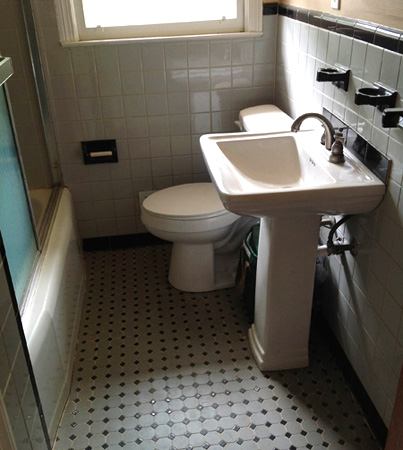
My former partner wanted to offer $105,000. I argued that we should offer $95,000. We volleyed the idea back and forth. We both worried that the “reverse sticker shock” of a less-than-six-figure-offer would cause the seller to dismiss us.
We consulted Mom and Dad. My dad, a tough negotiator, liked the idea of offering $105,000. My mom, an even tougher negotiator, agreed with my idea.
Mom knows best: we submitted an offer of $95,000 and waited for the seller to retort with a counter-offer. To our amazement, the seller accepted it!
You know, real estate just blows my mind. You can “save” $10,000 just by asking for it. I don’t know any other area of life in which that’s possible, unless you’re running a major business.
We bought the house for $94,000, after getting another $1,000 concession when the inspector found mold in the basement. (It’ll cost $1,000 to treat the mold, so we’ll “break even.”)
The “REAL purchase price” is the purchase PLUS initial repairs. Our repairs are going to cost about $6,000, so the “actual cost” of the house is $100,000.
According to the One Percent Rule of Thumb, this house would be a good deal if we collect $1,000 per month in gross rent. ($100,000 x .01 = $1,000).
I estimate that this house can rent for $1,000 – $1,200 per month, thanks mostly to its zoning and its school district. The return on investment isn’t as hot as the $21,000 house, but the quality of tenant is likely to be much higher.
What’s Next?
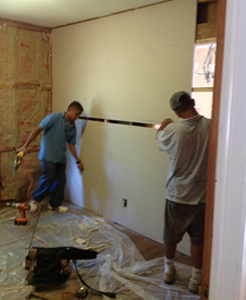 Thank goodness we’ve started delegating out the repair work: instead of sanding cabinets and hammering nails in House #2, we outsourced that work and used the extra time to search for House #3.
Thank goodness we’ve started delegating out the repair work: instead of sanding cabinets and hammering nails in House #2, we outsourced that work and used the extra time to search for House #3.
Plus, we forged great relationships with the contractors who worked on House #2, so we knew exactly who to call for quotes on House #3. This streamlined the process immensely, allowing us to coordinate the repairs much faster.
If there’s one lesson that Houses #2 and #3 have taught me, it’s that you’re only as strong as the team around you. Business is a team sport. My focus from this point forward is to build that team.
UPDATE, NOV. 2012: We rented out the house! Check out the final numbers.

